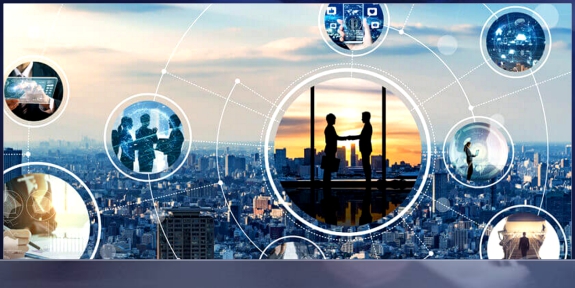Our Latest Blogs
Our Solutions News Blog was envisioned to gather and share information from the very best to help you and your business to become more effective.
Our Solutions News Blog was envisioned to gather and share information from the very best to help you and your business to become more effective.

In the face of a crisis or economic slowdown, resilient organizations ride out uncertainty instead of being overpowered by it...
How Did Business Create Resilience During & After The 2008 Recession?
- - - - - - - - - - - - - - - - - - - - -
In 2008 we went through a worldwide recession and companies that implemented the strategy of resilience came back faster and even leaped ahead of their competition. Now Covid has thrust us into an equally challenging time. Find out how adopting resilience can help you though these unprecedented times.quickly. access the resilience resource centre »
Source: McKinsey & Company

Companies can structure their organizations and decision processes for resilience by embracing six principles of long-lasting systems:
- - - - - - - - - - - - - - - - - - - - -
Source: Harvard Business Review / Written By: Martin Reeves & Kevin Whitaker
The essence of resilient leadership: Business recovery from COVID

Resilient leaders shift organizational mindsets, navigate uncertainties, and invest in building trust in order to develop a recovery playbook that serves as a solid foundation for the post-COVID future.
- - - - - - - - - - - - - - - - - - - - -
Whereas organizations used to describe agile change as “fixing the plane while it flies,” the COVID-19 pandemic has rewritten the rules of upheaval in modern times. Those of us leading any organization—from corporations to institutions to our own families—are not fixing the plane in midair, we’re building it. Times like these need leaders who are resilient in the face of such dramatic uncertainties.
The first article in this series described the essential foundations leaders need in order to effectively navigate through the crisis.1 Resilient leaders are defined first by five essential qualities of who they are, and then by what they do across three critical time frames: Respond, Recover, and Thrive.
As we progress into the Recover phase of the crisis, resilient leaders recognize and reinforce critical shifts from a “today” to a “tomorrow” mindset for their teams. They perceive how major COVID-19-related market and societal shifts have caused substantial uncertainties that need to be navigated—and seized as an opportunity to grow and change. Amid these uncertainties, resilient leadership requires even greater followership, which must be nurtured and catalyzed by building greater trust. And resilient leaders start by anticipating what success looks like at the end of recovery—how their business will thrive in the long term—and then guide their teams to develop an outcomes-based set of agile sprints to get there.
Resilience is not a destination; it is a way of being. A “resilient organization” is not one that is simply able to return to where it left off before the crisis. Rather, the truly resilient organization is one that has transformed, having built the attitudes, beliefs, agility, and structures into its DNA that enable it to not just recover to where it was, but catapult forward—quickly. read on »
Source: Deloitte Insights / Written By: Bill Marquard